“The Zone of Interest” Sound Designer Johnnie Burn on Creating the Soundscape From Hell
Writer/director Jonathan Glazer does not shy away from a challenge. He has created indelible sequences that are essentially mindworms, burrowing deep into your consciousness. One of his most beloved films, his 2013 masterpiece Under the Skin, was chock full of them. If you had to choose just one, perhaps it would be the wordless scene that takes place on a Scottish beach after Scarlett Johansson’s nameless protagonist (she’s an alien who seduces men throughout Scotland, to their eternal chagrin) lets a mother and father drown in the heaving sea while their baby, alone on a blanket, screams in helpless protest.
“Most of the directors I have met since have seen that movie and cited it,” says The Zone of Interest sound designer Johnnie Burn, a long-time Glazer collaborator who worked on Under the Skin. “Certainly, Jordan [Peele] and Yorgos Lanthimos are all Under the Skin fans.” [Glazer worked on Peele’s Nope and Lanthimos’s Poor Things.]
The Zone of Interest is full of indelible images, yet it can stake a claim for having the most indelible sound of any film in recent memory. Glazer loosely adapted the film from Martin Amis’s brilliant, scathing 2014 novel, jettisoning Amis’ love triangle plotting and pyrotechnic disgust for something graver, stiller, and perhaps more unsettling.
Glazer’s adaptation follows the commandant of Auschwitz, Rudolf Höss (Christian Friedel), his wife Hedwig (Sandra Hüller), and their family as they attempt to build a bucolic domestic life in their house, situated just next to the camp and its horrors, separated by a single wall. Capturing the soundscape of this schizophrenic situation was Burn’s mandate, a job that required a mammoth, year-long effort of recording and mixing, essentially a prolonged confrontation with the awful acoustics that surrounded a family that tried, in vain, not to hear.
“Jon said, ‘You’ve got a year to find out everything that we’re going to need and go and record it so that we’re ready for when we get into post-production,’” Burn says. “So that was many months of research and knowing there was a great responsibility to be accurate. That included reading all the witness testimony that was available, reading all the novels on the subject, and sourcing all the photography and even the drawings that were made by survivors.”
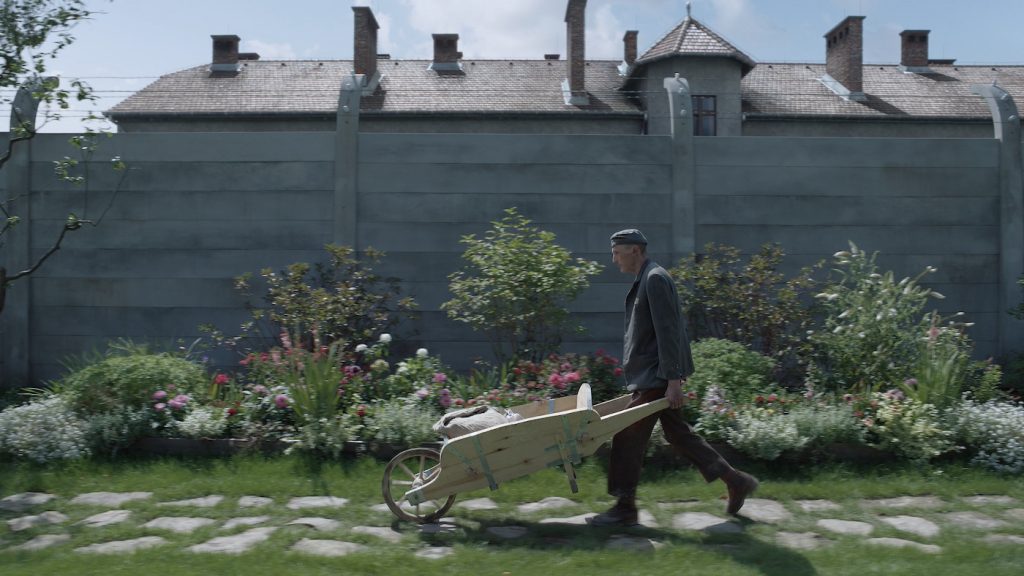
Increasing the difficulty was a method Glazer deployed in order to give his performers the most naturalistic setting possible—he had his cinematographer Lukasz Zal place cameras throughout the house and let them run continuously so that the performers never knew when they were being filmed. The house where the Höss family lived still remains, but once he gained permission, Glazer and his team built a replica on a set just outside the actual camp in southern Poland. The director was moved to make the film when he visited the real Höss home. “The geography is absolutely accurate,” Burn says. “The camp wall was right there. What attracted Jon to the project was standing in Auschwitz and being in the real camp commander’s house and thinking, ‘Jesus, they drank coffee here while that was fifty feet away.’”
Threading the set with unattended cameras was a stroke of genius but one that required a lot of trust from the performers and a lot of work for the sound team.
“Jon wanted it to feel all as natural as possible and didn’t want the actors to feel like they were performing to a particular camera,” Burn says. “Some of the actors were children, so he wanted to remove as much of the paraphernalia of filmmaking as possible. So it was all hidden cameras and hidden microphones, and takes could be an hour long. There was a speaker in each room, and Jon could give feedback and say, ‘Okay, go through your script again,’ but fifteen minutes might have gone by where they’d be in the house being themselves.”
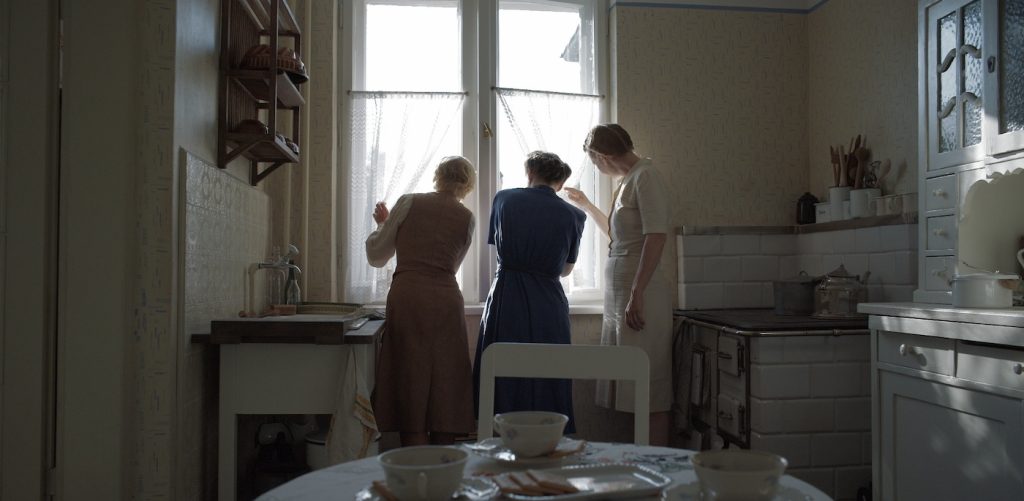
The goal for capturing sound during this stage of production was to plunge viewers into the familiar acoustics of domestic life: a baby crying, a football game on the radio, and children playing upstairs. The sounds coming from over the wall were going to be layered in later, and they’d change the way you’d absorb this family going about their lives.
“Capturing the sounds in the house wasn’t so much about hearing their dialogue,” Burn says. “Usually, the primary focus of a production mix is to record the dialogue cleanly, but for Tarn Willers, who was our fantastic production sound recorder, it was about wanting to hear the sound of people inside the house, the pots and pans and footsteps. It really made it extraordinarily credible that this wasn’t a film set but the real world.”
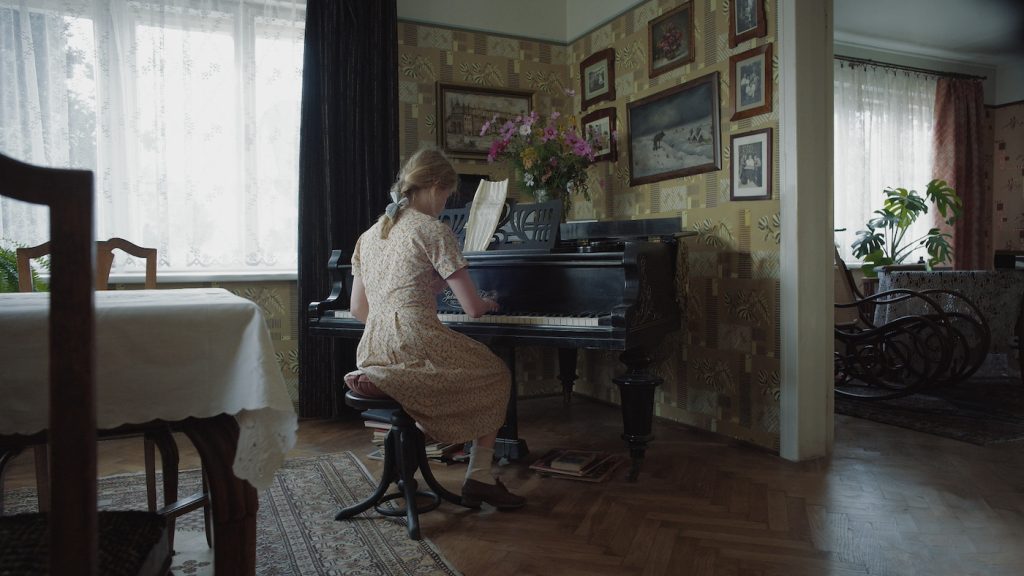
The Zone of Interest is really two worlds, or, perhaps more accurately, the attempt of the Höss family to separate two worlds: one hell, the other heaven. Burn was one of the people chiefly responsible for creating hell.
“We thought of it as two films: the film you see and hear in the house and the film you hear over the camp wall,” he says. “We went through the process of completing film one before we wanted to introduce the sound of horror because we didn’t want that to inform how we made the first film.”
To create a credible sonic hellscape coming from over the wall, Burn made a 600-page document for his team that included all his research, and he sent members of his team out into Europe to record extreme emotion and the various languages that would have been spoken in the camp where he could find it. This included recording sound from lower-division football matches where the line between fandom and chaos blurs quickly. Some of the first sounds you hear coming from the camp are when Hedwig is outside in the garden, closest to the camp wall. Yet it took a screening after an initial sound pass for Burn to realize what was necessary.
“We started with the garden scene and started introducing sounds for Hedwig as she walks through the sunflowers and looks up,” Burn says. “The first pass that we showed to A24 had five or six sounds in it. Chris Eddy, our production designer, said to me after, ‘Wow, it sounds really nice, like a country park, but there were a million people dying over the wall there.’ Jon and I realigned our aim, and that’s when we came up with the sound of the machine of death. We put the whipping underneath when Hedwig is putting on our lipstick and went from there in a much fuller way.”
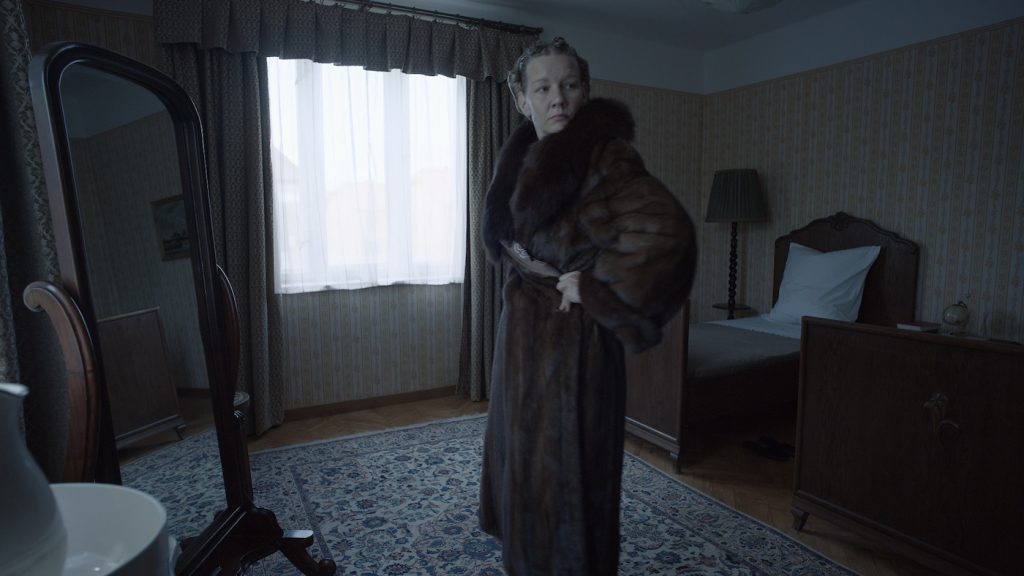
Actors are used to reacting to things that aren’t really there, but it’s rare for a production to have this much sound layered in after filming is complete, especially sounds that one would expect would draw the attention of the character. Of course, this act of ignoring the sounds of torture and death was very much the point.
“Yeah, it’s weird, isn’t it? Normally, I’m making background soundscape, and you’d be looking for an actor’s reaction, say a dog bark, and put it a half second before that,” Burn says. “But this is the complete opposite. Reinforcing the idea that they’re really ignoring it made it incredibly powerful. If ever we did find they were reacting to a sound, then we realized we’d made a mistake. When Hedwig and Rudolph are lying in bed on the first night, you hear all that sound coming over the wall, the shouts and gunshots. But the one sound she does react to is when she thinks she hears the floorboards above them and that their daughter sleepwalking upstairs.”
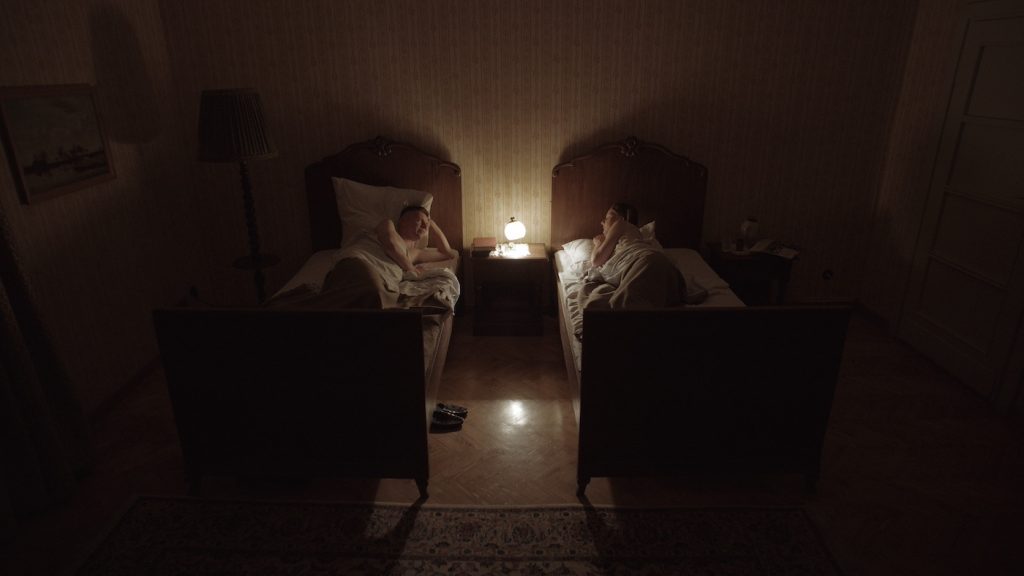
The sounds Burn was tasked with creating were a lot more than shouts, gunshots, and the crack of a whip. It’s for this reason he was initially hesitant to say yes to the film, even though it was being shot by someone he has a long, fruitful collaboration with.
“My initial reaction on being asked to work on this film was, internally, no thanks. It would be such an enormous immersion into such a grisly world,” he says. “Knowing the responsibility and what that sound was going to do and how important it was going to be. That included figuring out how to create the sound of the crematoria, the furnaces, and the constant rumble of horrific industry that was created nonstop in the camp.”
That constant rumble is something a viewer might not even catch the first time around, which was part of the design.
“That constant rumble is a representation of all of those things in the camp,” Burn says. “This sound was, extraordinarily, the first shot that I worked on. When you see the boys in their bedroom bunk at night playing with the teeth, and the young boy makes that kind of woo noise, Jon sent me that shot and said, ‘Can you make a sound of the chimney of the crematorium that will be what this boy has reacted to and mimicked?’ I played around blowing down pipes and recorded sounds of wind in chimneys to make something like the sound he mimicked, and that became the basis. The first time you’re really aware of it properly is after the family comes back from the riverbank on the canoe. The riverbank is serene; then you cut back to Hedwig plucking plants in the garden at home, and you realize there’s this rumble you’ve been hearing all along.”
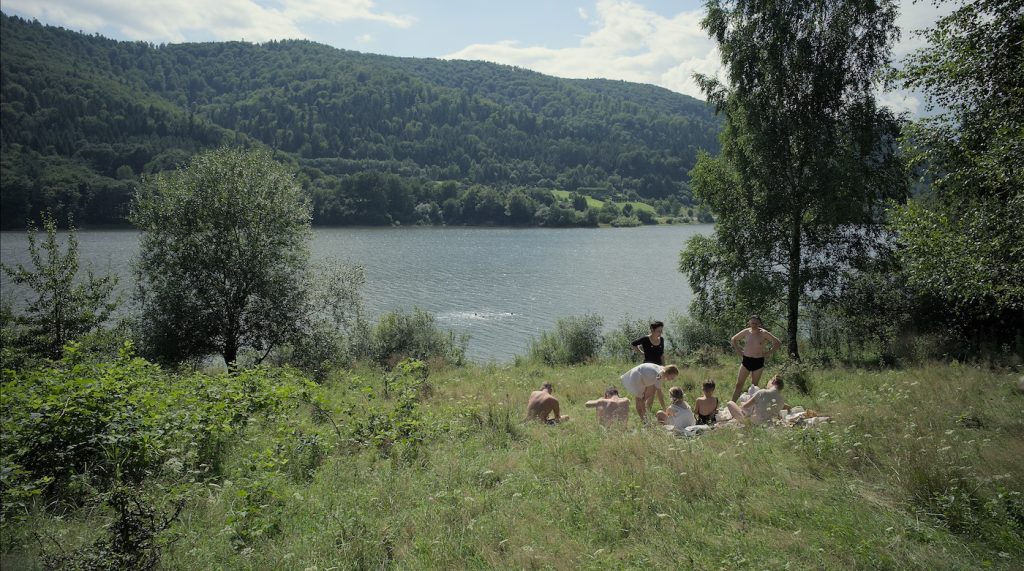
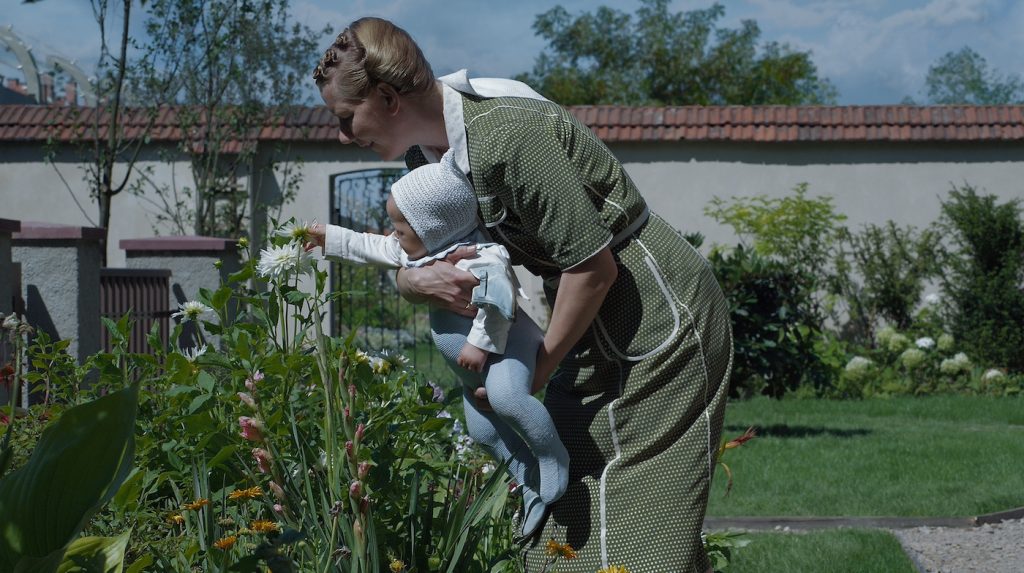
Burn and his team created an acoustic map of the camp, detailed to the decibel, so they could accurately depict how the soundwaves traveled across various distances.
“If we had a French voice, we’d know what block it would come from, and we’d position it correctly,” Burn says. “When we hear a volley of shots, we knew that was coming from the execution block, which is block eleven, which we also knew was 120 yards away. So, we recorded gunshots from 120 yards on the Isle of Wight in England, but with concrete reflective surfaces so we could hear the ricochets. For every sound, I’d look at the reflective surfaces in the image, and I’d make sure I had a duplicate sound if it was quieter and an echoey bounce if there was a wall there. The point is that the experience is very naturalistic. I was very keen for it to be very credible because, as opposed to the eyes, the ears are very hard to fool.”
A lesson even the Höss family is forced to learn.
Featured image: The Zone of Interest. Courtesy A24.



